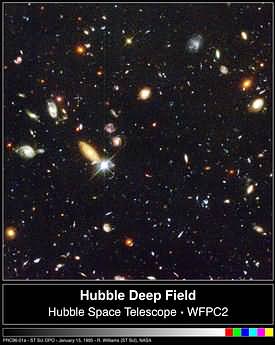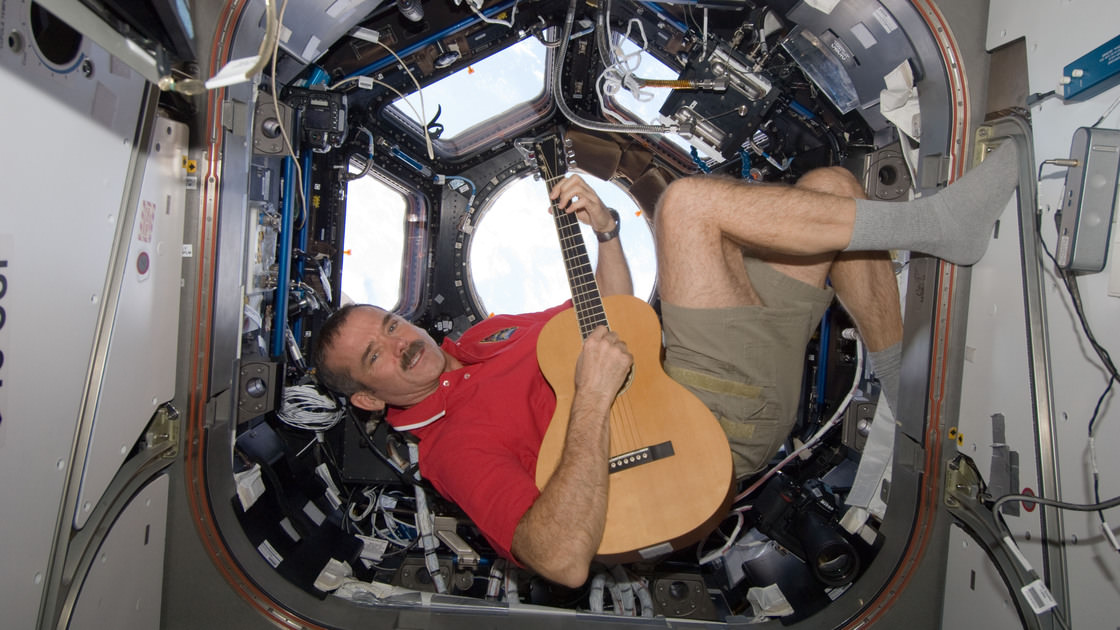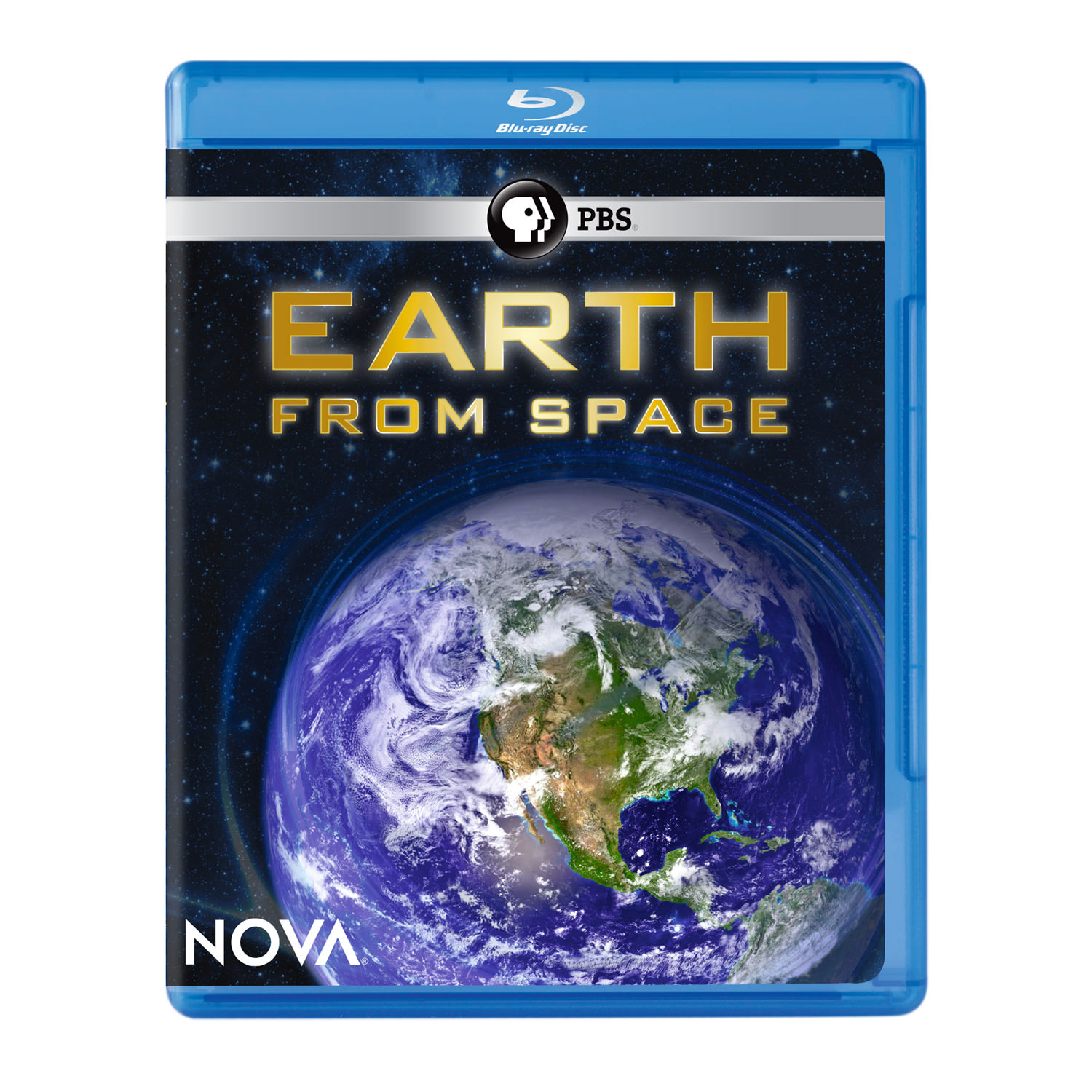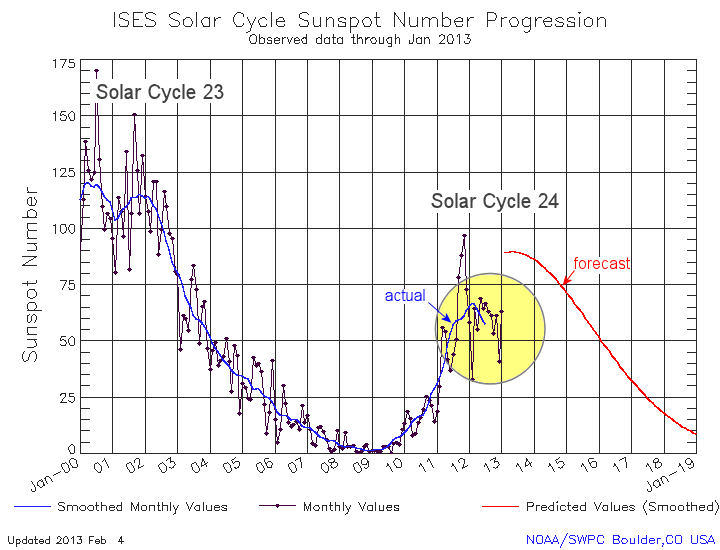“Hubble: Galaxies Across Space and Time” is an award-winning IMAX Super Short film. In less than 3 minutes you can explore 10 billion years of cosmic history as you fly through one of Hubble’s iconic images, the Hubble Deep Field. These galaxies were photographed by the Hubble Space Telescope as part of the Great Observatory Origins Deep Survey (GOODS) project. Hubble scientists and imaging specialists worked for months to extract individual galaxy images, placing them in a 3-D model according to their approximate true distances.
If you ever have the chance to see the big screen version of “Hubble 3-D IMAX,” do it. It’s an incredible cinematic view that portrays the immensity and gloriousness of our Universe like no other film I’ve seen. You can read my review of it here.
Space Oddity: Hadfield Records First Music Video from Space
He’s leaving space on Monday, but not before giving the world a memorable parting gift. ISS Commander Chris Hadfield has captured the attention and imagination of so many during his five-plus months in space via social media and with the many videos he’s recorded while on the International Space Station. This is his final video from the station, and according to his son Evan Hadfield — who has helped orchestrate the Commander’s barrage of tweets and images — it is also, coincidentally, the first real music video ever recorded in space.
“With deference to the genius of David Bowie, here’s Space Oddity, recorded on Station,” Hadfield tweeted. “A last glimpse of the World.”
As someone posted in the comments on this video, Hadfield is the new standard of incredible.
Win a Blu-ray of NOVA’s “Earth From Space”
One of the most stunning compilations of satellite based images from space is a recent documentary from public television’s NOVA series, called “Earth From Space.” The show explores how satellites and spacecraft have revolutionized not only how scientists look at the world, but how they are able to understand and study its intricate systems.
“The real power of satellite observations is that they represent objective truth,” said former astronaut Piers Sellers, who is also an ecologist, and appears in the documentary. “They tell us about what the world actually is doing not what we would like to be doing, not what we might fear it to be doing, but what it’s actually doing. And it’s that that allows us to see change, real change for what it is.”
“Earth From Space” is now available in DVD and Blu-ray, and Universe Today has four copies of the Blu-ray version to give away!
In order to be entered into the giveaway drawing, just put your email address into the box at the bottom of this post (where it says “Enter the Giveaway”) before Tuesday, May 7, 2013. We’ll send you a confirmation email, so you’ll need to click that to be entered into the drawing.
Here’s a preview of the show:
The two-hour program was produced with extensive consultation with NASA scientists, and it takes data from Earth-observing satellites and transforms it into dazzling visual sequences. Each sequence exposes the intricate and surprising web of forces that sustains life on Earth. In the show, you can see how dust blown from the Sahara fertilizes the Amazon; how a vast submarine waterfall off Antarctica helps drive ocean currents around the world; and how the sun’s heating up of the southern Atlantic gives birth to a colossally powerful hurricane.
“Earth From Space” looks not only at the big picture of Earth, but also delves into the microscopic world of water molecules vaporizing over the ocean, and reveals the astonishing beauty and complexity of our dynamic planet.
“EARTH FROM SPACE” is now also available on DVD and Blu-ray for purchase. The DVD is on sale now for $19.99, with the Blu-ray priced at $24.99. The program will also be available for Digital Download. Find out more about purchasing the program here, and You can find out more info about the program itself on the PBS website.
We’re only going to use these email addresses for Universe Today giveaways/contests and announcements. We won’t be using them for any other purpose, and we definitely won’t be selling the addresses to anyone else. Once you’re on the giveaway notification list, you’ll be able to unsubscribe any time you like.
Night Sky Observing for May Brings Spring Constellations
Here’s the latest update on what’s up in the night sky from Jane Houston Jones at the Jet Propulsion Laboratory. The Moon will be your guide on how to spot the spring constellations and other popular astronomical sights this month including nebulae, a galaxy trio and the site of a recent planetary discovery.
Magnificent New Timelapse: Death Valley Dreamlapse 2
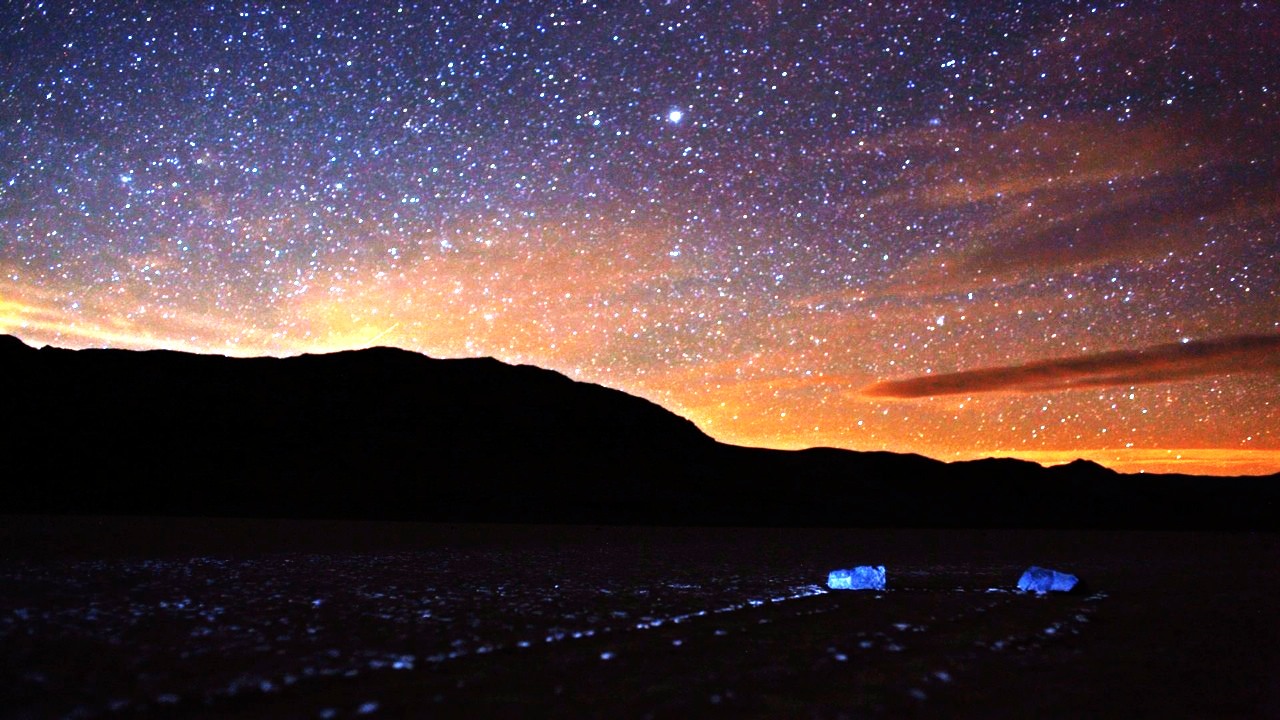
Have you ever dreamed of camping out under the dark skies of Death Valley? Dream no more: you can enjoy this virtual experience thanks to Gavin Heffernan and his Sunchaser Pictures crew. This magnificent new timelapse video includes some insane star trails, the beautiful Milky Way, and an incredible pink desert aurora!
“As you can see, Death Valley is a crazy place to shoot at,” Gavin said via email to Universe Today, “as the horizon is so strangely uneven/malleable. I don’t know if the valley was cut by water or underground magma, but it’s almost impossible to find a straight horizon.” See some great images from their video, below:
Gavin said he and his team tried out some new timelapse techniques, like moonpainting the foreground landscapes (0:53 — 1:20), and also some experiments merging regular timelapse footage with star trails — “a technique we’ve been calling Starscaping (1:07:1:33)” he said. “If it has an actual name, let us know! 🙂 Star Trails shot at 25 sec exposures. No special effects used, just the natural rotation of the earth’s axis. Photography Merging: STARSTAX. Used two Canon EOS 5Dmkii, with a 24mm/1.4 lens & 28mm/1.8.”
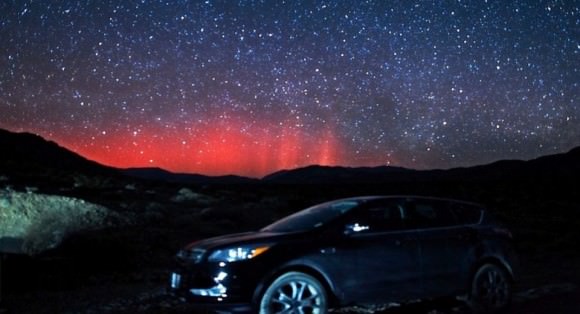
See their original Death Valley Dreamlapse here, as well as a behind the scenes “making of” video for this second Death Valley Dreamlapse. Sunchaser Pictures also has a new Facebook page, so “like” them!
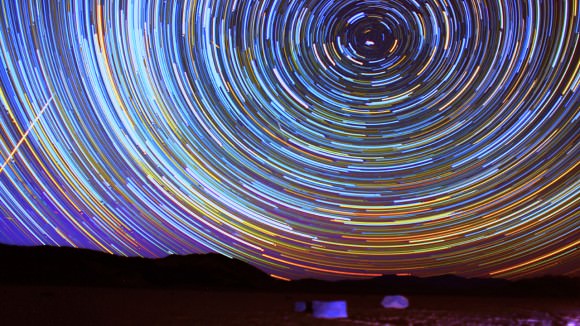
ALMA: The View from a Different World
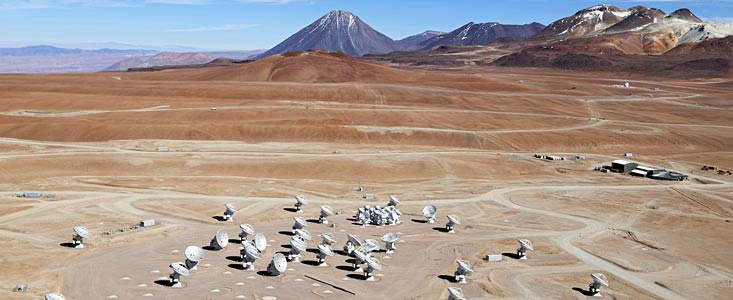
A new film called The View From Mars takes a look ALMA (Atacama Large Millimeter Array), the huge international telescope project that was inaugurated in Chile this week. It is located in the Atacama Desert, the driest place on Earth and an area that bears a striking resemblance to the Red Planet.
But the conditions there, with clear, dry skies, are perfect for astronomy. ALMA’s moveable group of 66 giant antennas do not detect visible light like conventional optical telescopes. Instead they work together to gather emissions from gas, dust and stars and make observations in millimeter wavelengths, using radio frequencies instead of visible light—with no need for darkness, so the stars can be studied around the clock. With these tools, astronomers will soon be able to look billions of years into the past, gazing at the formation of distant stars and galaxies.
“In doing so,” says filmmaker Jonathan de Villiers, “they’ll build a clearer picture of how our sun and our galaxy formed.”
Here is part one; you can see part 2 at this link.
We Live in a Cosmic Shooting Gallery
In this new video from Big Think, astrophysicist Neil deGrasse Tyson says he’s almost embarrassed for our species that it takes a warning shot across our bow before legislators take seriously the advice they’ve been receiving from astronomers about getting serious about asteroid detection and deflection; that it’s a matter of when not if Earth will get smacked by an asteroid. “But it took an actual meteor over Russia exploding with 25 times the power of the atom bomb in Hiroshima to convince people that maybe we should start doing something about it.”
A Shot of Philosophical Espresso: “The Mirroring Mind”
How does the mind work? What is reality? Self-professed wonder junkie Jason Silva has a new video, which debuted this weekend at the South by Southwest (SXSW) festival. Hit ‘play’ and get ready for a fast ride!
THE MIRRORING MIND – by @JasonSilva from Jason Silva on Vimeo.
A Rather Quiet Solar Maximum … For Now
2013 was supposed to be the year of Solar Max, the peak of the 11-year sunspot cycle. But so far, solar activity has been fairly low, with sunspot numbers well below expectations as well as infrequent solar flares.
Back in 2008, the NOAA/NASA Solar Cycle Prediction Panel, said that due to the extrememly deep and quite solar minimum going on at that time, they anticipated Solar Cycle 24 – our current cycle – to be below average in intensity. They’ve certainly been right about that.
In this video, solar physicist Dean Pesnell of the Goddard Space Flight Center says that this solar max looks different from what we expected because it may end up being “double peaked.”
This video shows the low amount of sunspots so far in 2013:
Read more at Science@NASA
.
A Completely Fake UFO Video
We’ve yet to see an authentic and convincing UFO video, and this one takes the cake. It is completely fake. Not one thing in it is real. Seriously. If you haven’t yet seen or heard about the “UFO Over Santa Clarita” video (above), it appears to be footage taken from a handheld camera, shakily taking shots from within a moving car. Then a spaceship darts across the sky, and the gasping filmmaker stops the car, only see a huge hovering mothership grab the first ship and disappear.
The filmmaker, Aristomenis “Meni” Tsirbas, revealed to Wired that, as many suspected, the video was fake. But impressively, absolutely everything in the film, from the car’s interior to the sky to the UFOs, is not real. It is all CGI (Computer Generated Imagery).
“The video is 100 percent CGI through and through,” Tsirbas told Wired. “The electric towers [seen alongside the road] are 3-D geometry and the sky is a 3-D dome that has a texture map on it that’s a combination of painting, volumetric clouds and photogrammetry.”
Tsirbas has now produced a new video showing the breakdown of the CGI, and it’s quite impressive:
“The point of the video was to prove that CGI can look natural and convincing,” Tsirbas told Wired in another article. ”Everybody assumes the background and car are real, and that the UFOs are probably fake, especially the over-the-top mothership at the end. The general reaction is disbelief, so I usually have to prove it by showing a wireframe of the entire shot to prove that nothing is real.”
Tsirbas has worked on movies such as Titanic and Hellboy and several Star Trek television shows. Wired said Tsirbas and his team spent about four months mimicking the look of an accidental extraterrestrial encounter captured on a smartphone.
As impressive as Tsirbas’ handiwork is, what is most perplexing is the reaction to the video by some of the UFOer crowd.
“But the most unusual comments come from a growing chorus of people who insist that the announcement of the hoax is actually part of an elaborate government plan to cover up the fact that the video is real,” Tsirbas said in Wired. “I even received a mildly threatening personal e-mail from one of these people.”
Go figure.

